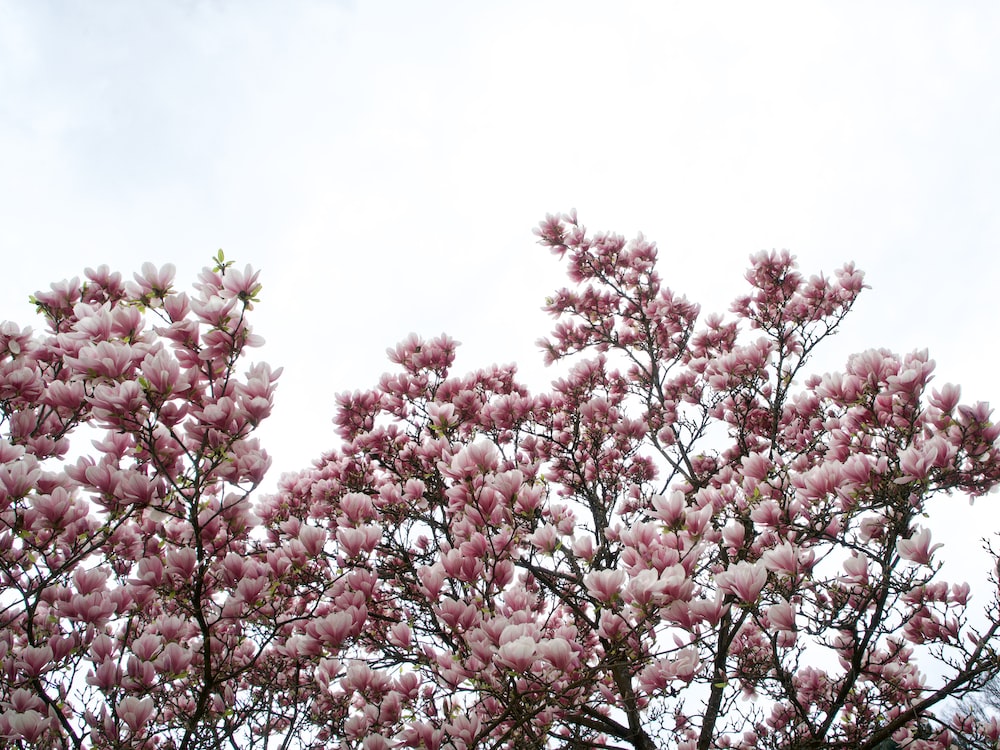Trimming your magnolia tree is an important part of keeping it healthy and looking its best. Regular pruning can help to control the size and shape of the tree, as well as promote growth and flowering. Different techniques should be used depending on the age and size of the tree. Always use sharp, clean tools, and be sure to wear protective gear. For larger branches, use a saw to make clean cuts. For smaller branches, hand pruners are ideal. With proper trimming, you can enjoy a beautiful magnolia tree for years to come.
The best time to trim a magnolia tree is during the spring, when the tree is dormant. Pruning at this time will help promote healthy growth and reduce the risk of disease. Regular pruning is recommended for all magnolia trees in order to keep them looking their best.
Best Times of Year to Trim Magnolia Trees
Spring and fall are the best times of year to trim magnolia trees. Pruning in late winter helps maintain the tree’s shape and can help reduce the risk of disease. Pruning in the summer months helps promote new growth and can help keep the tree healthy. It’s important to prune the branches at the right time of year to ensure the healthiest growth for your magnolia tree.
Pruning and Trimming Magnolia Trees

Pruning and trimming magnolia trees is an important part of keeping them healthy and looking their best. The best time to prune magnolias is in late winter or early spring, before new growth begins. When pruning, be sure to remove dead, diseased, or damaged branches, as well as any shoots growing inward toward the center of the tree. To maintain a desired shape, selectively prune branches back to a bud or side branch.
When shaping magnolia trees, do not remove more than a third of the foliage at once. This will help the tree stay healthy and maintain its beautiful shape.
Always use sharp pruning tools and disinfect them between cuts to prevent disease spread. Proper pruning and trimming of magnolia trees will ensure they remain healthy and vibrant for years to come.
Tools Needed for Pruning Magnolia Trees
Pruning magnolia trees requires a few special tools to do the job right. Gardeners will need a pair of sharp pruning shears, anvil pruners, and loppers. Pruning shears are used for trimming small branches, while anvil pruners and loppers can handle larger branches. It’s also important to have gloves and safety glasses to protect yourself from sap and splinters.
How to Prune Magnolia Trees
 Pruning magnolia trees can help give them a beautiful shape and promote healthy growth. Start by removing dead, diseased, and damaged wood. Then, cut back any crossing or rubbing branches. Take off any suckers growing from the base of the tree. Finally, thin out branches that are too close together. When pruning, use sharp, clean tools, and make sure to take off no more than one-third of the tree’s foliage.
Pruning magnolia trees can help give them a beautiful shape and promote healthy growth. Start by removing dead, diseased, and damaged wood. Then, cut back any crossing or rubbing branches. Take off any suckers growing from the base of the tree. Finally, thin out branches that are too close together. When pruning, use sharp, clean tools, and make sure to take off no more than one-third of the tree’s foliage.
For more detailed instructions, consult an arborist or a gardening expert.
Benefits of Pruning Magnolia Trees
Pruning magnolia trees offers many benefits, including improved flowering and fruit production, increased air circulation, and enhanced tree shape and structure. Pruning can also reduce the risk of disease and insect infestations, as well as reduce the size of the tree and make it easier to maintain. Proper pruning techniques should be used to ensure that the tree remains healthy and aesthetically pleasing.
Pruning magnolia trees involves removing dead or diseased branches, thinning out dense foliage, and removing crossing branches and suckers. Pruning should be done in late winter or early spring to avoid cold weather damage. When pruning, it is important to use sharp, clean tools and make careful cuts to avoid damaging the tree.
In addition to the physical benefits of pruning, it can also help to improve the overall health of the tree by encouraging new growth and increasing its resilience. Pruning magnolia trees can be a rewarding experience and can help to keep your tree looking beautiful for years to come.
Reasons for Pruning Magnolia Trees

Pruning magnolia trees is an important part of keeping them healthy and growing. Regular pruning helps to maintain the shape and size of the tree, encourages flowering and fruit production, and prevents diseases from spreading. Pruning also improves air circulation, reducing the risk of fungal infection, and can reduce competition for sunlight and water from other plants. Proper pruning techniques will ensure that the magnolia tree looks healthy and vibrant.
Branches that are dead, diseased, or broken should be removed to improve the overall health of the tree. Thinning out branches and removing any crossing, rubbing, or weak limbs is also beneficial as it helps increase light and air penetration. Pruning should be done in late winter or early spring before the tree begins to bud.
By pruning magnolia trees regularly, gardeners can maintain the health of their trees and enjoy the beauty of their blossoms and foliage.
When Not to Prune Magnolia Trees
Magnolia trees should not be pruned during the winter months when they are dormant. Pruning during this time can remove the flower buds, resulting in fewer blooms in the spring. Additionally, pruning during the summer can shock the tree and cause it to lose its leaves. If pruning is necessary, it should be done in the spring, after the blooming season is over.
Pruning too much can also harm the tree by removing too much of its foliage. Magnolias should not be pruned heavily, as this can reduce the size of the tree and make it more prone to pests and diseases.
Ultimately, the best time to prune a magnolia tree is after its flowering season has ended. This will ensure that the tree retains its natural shape and blooms in the spring.
Tips for Pruning Magnolia Trees

Magnolia trees are an attractive addition to any landscape. Pruning magnolia trees is essential to maintain the health of the tree and encourage new growth. To prune your magnolia, start by removing dead or diseased branches. Then, thin out the canopy to allow light and air to reach the inner branches. Finally, cut back any branches that are crossing or rubbing against each other. With a few simple steps, you can keep your magnolia looking its best.
For more information on pruning magnolia trees, consult a certified arborist or your local extension office.
